Top 10 Hindi moviesWe've put together a list that will make it easier for you to navigate some of the best Bollywood films, whether you're new to Indian cinema or just trying to catch up. 
1. Lagaan: Once Upon a Time in IndiaThe worldwide box office success "Lagaan" is regarded as the most ambitious, expensive, and profitable Bollywood film ever filmed. It featured one of the top Indian actors, Aamir Khan. It was produced with an eye toward international audiences. Why not a Bollywood film for non-Indians if "Crouching Tiger, Hidden Dragon" could escape the martial arts ghetto and earn $150 million? It has been amassing incredible per-screen averages in North American theatres. It has been nominated for an Academy Award for best foreign film, succeeding in transcending its category. 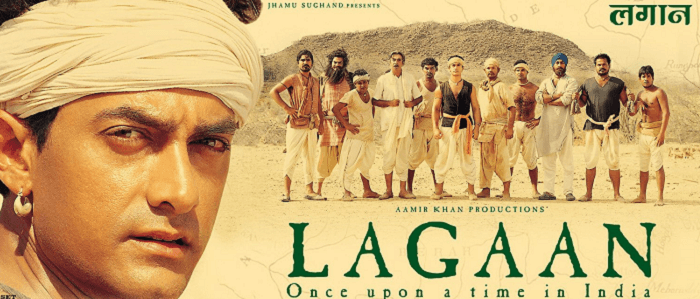
All of which dispels the likelihood that most of the review's readers have never seen a Bollywood film and aren't interested in doing so immediately. With its striking vistas, buildings, and settings, vivid colors, unexpected and joyful musical moments smack dab in the heart of tragic sequences, and melodramatic acting, this movie is unlike anything they've ever seen (teeth gnash, tears well, lips tremble, bosoms heave, fists clench). It also brings to mind the movies we all watched as children, which featured clearly defined villains and heroes, a love triangle, and occasionally even a comic character who intervened to rescue the day. "Lagaan" is a masterfully made, wildly entertaining epic with the flavor of a different civilization. The Raj, England's rule of occupation in India, was at its height when the story takes place. Capt. Russell (Paul Blackthorne), a lip-curling rotter with a racist streak, is the local British commander in a remote region. He taunts the local maharajah in front of him and has no qualms about beating a Hindu rebel. Even his fellow police officers consider him to be excessive. He is in charge of administering "Lagaan," the annual fee farmers must pay to their maharajah and the British. The farmers cannot pay due to the drought and famine in the area. Russell is confronted by Bhuvan (Aamir Khan), a leader among his people, who discovers his weakness: The captain is fixated on cricket and thinks Indians will never understand it. Bhuvan says it is similar to an old Indian game, and Indians could be very good at it. Bhuvan accepts Russell's wager that the British squad will play a cricket match against a rural team. There won't be any lagaan for three years if the Indians triumph. Lagan will be tripled if the British team triumphs. Since a triple tax would bankrupt the villagers, they believe Bhuvan is crazy. However, he argues that because they cannot pay the existing tax, they have nothing to lose. A local team is put together, and Bhuvan begins to coach them. The villainous captain's sister, Elizabeth Russell (Rachel Shelley), feels that her brother's agreement is unfair and sneaks out to the village to advise on cricket. Gauri (Gracy Singh), a local woman who has thought she and Bhuvan are destined to get married, is disturbed by her closeness to Bhuvan. The deceitful Lakha (Yashpal Sharma), who wants Gauri for himself and serves as Russell's spy because he thinks Bhuvan will have a better shot with her if he loses face, adds another twist to the tale. The village team members are introduced to us; they are an oddly diverse group that includes Guran, a low caste fortune teller (Rajesh Vivek) whose paralyzed arm helps him to toss a mean curve ball. Deva (Pradeep Rawat) is another; his time spent serving in the British army has only increased his disdain for his former employers. The action is interspersed with a lot of music while training takes place in the village, and the British scoff from their regimental headquarters. The British host dances where unmarried teenage girls who have left their homes expect to meet a qualified young officer. Elizabeth is not interested in the candidate chosen for her (while dreaming of Bhuvan). Additionally, there are spontaneous musical outbursts in the community, most notably when storm clouds herald the end of the protracted drought. The singing voices in these scenes are usually dubbed, as is customary in Bollywood (the voice-over actors are also stars in their own right), as the camera flies into a joyful ballet with dancers, singers, and swirls of vibrantly colored saris. Such dancing sequences would be too artificial and nonsensical for realistic current Hollywood, but as we love them, we feel like we're getting away with something. India serves as the setting for the action. It has been a while since I gave film praise for its setting; I think of "Dr. Zhivago" (1965) or "Lawrence of Arabia" (1962). Like David Lean, director Ashutosh Gowariker is not afraid to linger on old forts and palaces, vast plains, and the birthday-cake architecture of the British Raj, which is so out of place but still exudes a calm, self-assured confidence. 2. Gangs of WasseypurThe 2012 film "Gangs of Wasseypur" by Anurag Kashyap is playing in theatres in North America for the first time. This presents the chance to watch one of the most ambitious and, quite likely, the best gangster movies ever created. There is no shortage of hyperbole in contemporary cinema criticism, but spare us the salt. It is not required. Because "Gangs of Wasseypur" is so excellent, Anurag Kashyap will always be regarded as a prominent director. 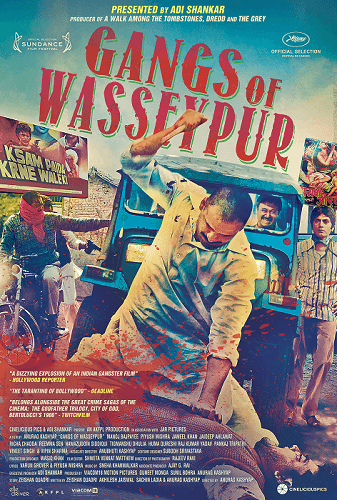
The movie opens with a steady four-minute clip that starts on a television screen playing a Hindi soap opera and cuts to the street where armed gangs are desperately looking for a man while shooting anyone who stands in their way who might be his ally. His home gets bombed. There is a cut and, with it, an exhale when the pressure becomes unbearable. However, the stress does not lessen. Over the following five hours, the movie advances without stopping. The tale then quickly flashes back to 1941 after the opening scene, which is situated in the present. The history of Wasseypur is presented through narration, which is voiced by a supporting figure who becomes increasingly important to the plot over time. Wasseypur is a significant coal mining hub in the area, and this serves as the focal point of a conflict between three parties: industrialist Ramadhir Singh, who assumes control of the mines after India gained independence from Britain; the Qureshi, who have long had control over Wasseypur; and Shahid Khan, a miner who was expelled by the Qureshi for robbing trains but later returned under pretenses to steal the mines from Singh. This dynamic eventually lasts into the 21st century and begins a lattice of interconnected conflicts and allegiances that never loses its fascination. The key is how Kashyap constructs his main narrative from a collection of support incidents. There is never a problem with a hazy focus or a disproportionate prominence. All of the actors deliver outstanding performances, but Richa Chaddha, who plays the matriarch of the Khan family, and Nawazuddin Siddiqui, who portrays her second son and the movie's star in "Gangs of Wasseypur," deserve special praise for their efforts. Story-wise, everything is precisely how it should be. The achievement is astounding, ranking right up there with Coppola's first two "Godfather" movies or Leone's "Once Upon a Time in America." The action is always flawlessly blocked, especially in the longer takes inside action sequences, even though Kashyap first gives the impression of being a more humble filmmaker by filming in a primarily naturalistic style. While there are allusions to earlier films (like Eli Wallach's timeless homage to gunfight realism, "When you have to shoot, shoot." Going forward, any discussion of gangster flicks must include "Gangs of Wasseypur," or it won't be complete. It serves as a reminder of what the term "epic" actually means in a time when its meaning has been diminished by overuse. It serves as Anurag Kashyap's entry ticket for the hall of fame. It is a violent, furious piece of art with a mind-blowing scope (that is yet, or maybe unavoidably, rather humorous in places). Still, it shouldn't deter aspiring directors from picking up a camera because they believe there is no way to surpass it. Grab the camera. Movies need to be made. Target high. 3. Rang De Basanti"Rang de Basanti" represents a significant step up by writer-director Rakeysh Omprakash Mehra ("Aks") in his sophomore feature and a largely successful attempt to push the Bollywood envelope. It is an ambitious blending of history, politics, romance, and patriotism within the constraints of a commercial Hindi film. The story of a group of youthful partygoers discovering a cause worth fighting for is translated into hearty entertainment, though not of the exotic variety most western Bollywood fans find appealing. Big-budgeter had a great late-January opening in Indian multiplexes and still had legs. 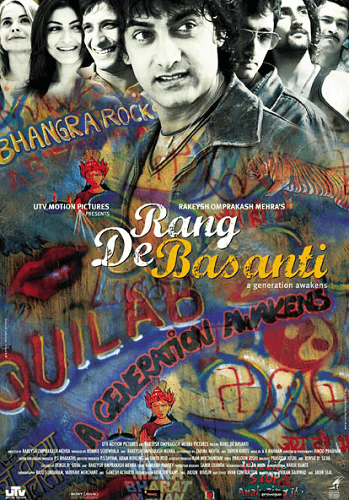
Here, the nationalism at the core of many popular Hindi films is distinct from the nationalism in Indo-Pak dramas. In contrast to border tensions, "Rang de Basanti," an anti-British revolutionary phrase that means "Paint It Yellow," is more focused on national pride. The young protagonists in the film think India is still a "shit hole" that hasn't made the most of its fifty years of hard-won independence, making the film's portrayal of contemporary Indian values and corruption seem rather harsh. Later reels discuss the problem of the West policing non-Western revolutionary movements and labeling any participants as "terrorists." The script alternates between two timelines, eventually merging them. One is in sepia and takes place in British India in the 1920s during the revolt led by the revolutionary Punjabi Bhagat Singh; the other is in color and takes place in contemporary Delhi among college students. After the titles, the action takes place in London in 2002, where James McKinley, a British officer (Steven McKintosh), is moved by the bravery of a hanged revolutionary. After learning that her concept for a film based on his journals has been scrapped, McKinley's granddaughter Sue (Alice Patten, daughter of Hong Kong's final governor, Chris), heads to Delhi to start production on "The Young Guns of India," a snappily titled low-budget film about the revolutionaries. Sue encounters a variety of students she seeks to cast in her movie through her local contact, Sonia (Soha Ali Khan, sister of well-known actor Saif Ali Khan). Daljeet, often known as "DJ," is the gang's leader and the cockiest member (Aamir Khan from "Lagaan"). Between the games and the enjoyment, Sue begins to "see" the pals as Bhagat Singh and his companions. But after ultimately persuading them to collaborate on her proposal, problems and internal strife beset the production. The kids' inability to relate to the do-or-die patriotism of their ancestors is the biggest issue. The group, however, quickly becomes politicized and suffers tragic outcomes when Sonia's fiancé, an air force pilot Ajay (Southern Indian actor Madhavan), perishes in a crash brought on by high-up corruption. Director Mehra takes us on an enlightening voyage of self-discovery and courage while reigniting the hot spark of enthusiasm for and pride in one's nation with a deftly structured, non-linear style of narrative. The characters literally and figuratively breathe the essence of the Bravehearts who gave their life for the country as he blurs the boundaries between the past and the present. While AR Rahman's anthemic tunes have an uplifted and soul-shaking tone, Kamlesh Pandey's inspiring lyrics awaken the hidden corners of our hearts. Every once in a while, a film comes along that makes us doubt our loyalty to our nation, makes us feel guilty about ignoring the horrors of the world, awakens us to the corruption, bureaucracy, and injustice that are pervasive in the system, and urges us to tear down these barriers and stand up for what is right. Such a movie is Rang De Basanti. It gives us, as citizens, a sense of joy, purpose, and obligation for our homeland so that we can proclaim "Jai Hind" via our words and deeds. The fundamental problem, which undermines the climax, is that the film lacks a genuine, emotional connection despite likable performances from most actors. Khan, who portrays a younger version of himself, is endearing as the playboy DJ in a refined way. Patten, 25, makes a pleasantly new impression as Sue throughout her little appearance on film and expertly delivers her Hindi language. Om Puri, Waheeda Rehman, and Kirron Kher, who plays DJ's mother, are just some dependable veterans in the supporting cast. The film's emphasis on the young Indian generation, the future of our nation, and their responsibility to continue the work of their forebears, however, is the key message to take away. It highlights the necessity for powerful voices that work to bring people together, foster optimistic thinking, and tear down the barriers of prejudice and religious intolerance via collaboration and like-mindedness in action. The rhythmic melodies that A.R. Rahman is known for being upbeat but forgettable. Other technical credits are excellent. 4. Mughal-e-AzamAmong the most well-known tragic love tales from the East are Heer-Ranjha, Laila-Majnu, and Salim-Anarkali. They all explore the idea of star-crossed lovers whose union is doomed. 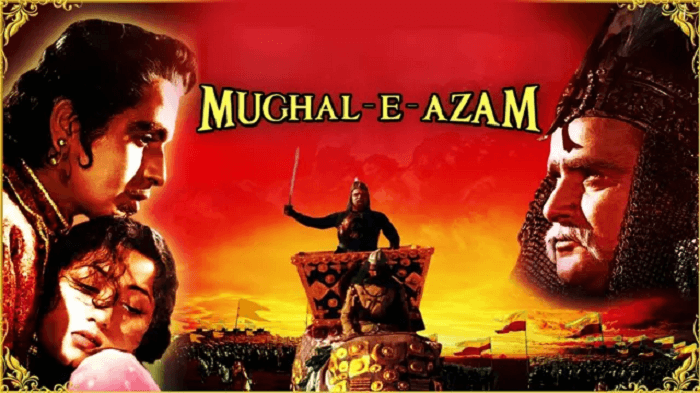
Salim and Anarkali's love story has been reimagined numerous times over the past century in plays, musicals, and films, but none have been as grandiose and opulent as K Asif's Mughal-e-Azam (1960). Salim and Anarkali's sad love tale was immortalized by Asif's masterpiece, based on Imtiaz Ali Taj's drama Anarkali. Nearly everyone in India must have seen Mughal-e-Azam or at least be familiar with the story. The film chronicles the court dancer Anarkali (Madhubala) and prince Salim (Dilip Kumar), the sole son of Mughal emperor Akbar and Hindustan's successor, who fell in love in the 16th century. All hell breaks loose when Akbar the Great (Prithviraj Kapoor) learns about the relationship. The emperor throws Anarkali in jail, which causes the crown prince to raise the red flag of revolt. Mughal-e-Azam keeps up fairly well from both the technical and creative perspectives, despite the fact that judging a movie created more than 50 years ago from today's perspective is unfair. The various stories of K Asif overcoming obstacles to realize his dream are nearly as legendary as the movie itself. When Asif, a former tailor who switched to the cinema, chose to make Mughal-e-Azam, he had only made one movie, Phool (1944). The movie is a visual feast in every way, from the art direction to the costumes to the cinematography. The sets by MK Syed, which displayed an empire's wealth yet reached its apogee, were magnificent and contributed to the mood. The sets play a significant part in immersing you in the sixteenth century. K Asif diligently and painstakingly crafted each frame of the movie with attention to even the smallest detail, capturing the massive and lavish Mughal palaces and the time. Despite its technical mastery, the movie's main strengths are its touching narrative and the flawless acting by every cast member. When filming began, Dilip Kumar, who played prince Salim, was a rising star in Hindi cinema; nevertheless, by the time the movie was released on August 5, 1960, he was unquestionably the biggest star in the business (the term "superstar" had not yet entered the lexicon of Indian cinema). He gave the prince's rebellious, love-struck persona gravity. Dilip Kumar's body language and line delivery in the movie exhibits a certain composure. Salim rarely loses his temper, but when he does, he controls his fury and displays it effectively. Even simply, his aura is enough to elicit respect. He never allows you to forget that he is the crown prince of Hindustan, after all. But we get to witness a different side of Salim when he's with his lady love. As Anarkali, Madhubala had a mysterious air. Madhubala portrays all the facets of Anarkali masterfully, from the shy servant and dancer in Akbar's durbar to the lady bravely confessing her love for the prince in front of the entire court in the timeless song "Pyaar Kiya To Darna Kya." Technically speaking, the song's picturization was nothing short of amazing. It was thought nearly impossible to shoot in a Sheesh Mahal, often known as a palace of mirrors, where the song was situated, yet Asif and his cameraman RD Mathur managed the miracle. With conviction, Kapoor revealed Akbar's inner battle. The emperor is not your stereotypical evil father, as we saw in Hindi movies in later decades. He exhibits a more compassionate side of himself before the conflict with his son. K Asif and Amanullah Khan co-wrote the screenplay for the movie, and it is just as brief and superb as the other technical departments. The tale advances with each scene and each exchange of words. Despite the three-hour running time, every scene contributes in some manner to the plot. The ten songs on Naushad's classic soundtrack fit well with the movie's plot. The songs are incorporated into the script so seamlessly that skipping a song would disrupt the flow of the story. Legendary vocalists like Mohammed Rafi, Lata Mangeshkar, and the famous classical vocalist Ustad Bade Ghulam Ali Khan performed the tunes. Khan saheb used to view cinema as a lesser art. Hence it was difficult for Asif and his music director to convince the ustad to donate his voice for the movie. Asif promised the renowned singer an unheard-of Rs 25,000 as compensation for each of the two songs he was to sing in the movie, ensuring that he made his acting debut. At the time, prominent playback singers like Mohammed Rafi and Lata Mangeshkar received only Rs. 500 per song! The film's brilliant discourse also has a poetic cadence to it. Sometimes, it appears as though the characters are reciting Shayari (Urdu poetry). The dialogues make extensive use of Urdu to make them sound more period-appropriate. But their writing also reflects a great deal of thought. Consider the city of Jodhabai (Durga Khote). Jodhabai hardly ever used Urdu terms, unlike the other characters, whom all speak in polite Urdu. These small details further enhance the credibility of the film. 5. 3 IdiotsAn exciting year for India, when the aam aadmi voted for progress, liberalism, and secularism, is best summarised by the movie 3 Idiots. The three idiots, Raju Rastogi (Sharman Joshi), Farhan Qureshi (R Madhavan), and Rancchoddas Shyamaldas Chanchad (Aamir Khan), are ideal archetypes of the new age Indian who is fundamentally a nonconformist, questioning outdated givens, choosing to live life on his terms, and charting new roads that purposefully skirt the rat race. Of course, they start on the beaten path because of cultural and family pressure, but they refuse to fit into a mold. 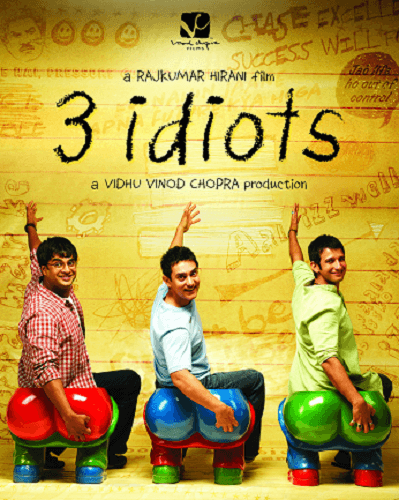
Enrolling our trio into the city's prestigious engineering college signals the movie's start. The first encounter with the required ragging sessions reveals the gang's leader: newcomer Baba Rancchoddas, as his buddies affectionately refer to him. Rancho mentors his pals on various life mantras and guides them through the maze of India's competitive, high-pressure, rote-heavy, illogical, and even cruel educational system. For example, striving for quality rather than success; asking questions rather than taking things at face value; innovating and trying new things rather than copying and memorizing; and, generally, following your heart's calling if you want to make a difference. As a result, the trio is constantly at odds with the powers that be. This conflict is symbolized by the three-faced Principal, Viru Sahastrabuddhe (Boman Irani), who worships the cuckoo because the bird's life begins with a murder. Kill the competition, according to the Princi, because there is only one position at the top. Poor, careless Princi! Does he not see that competition is futile, model kids like Chatur (Omi) turn out to be duds in real life, and nonconformists like Rancho and Rocket Singh Inc., who don't give a damn about winning, may win in the end. More crucially, they might have high EQ scores, never losing their humanity and social abilities, and high IQ scores (intellectual quotient). The best thing about the movie is how much Rajkumar Hirani says while maintaining his sense of humor and overall lightness of being. Despite being loaded with fundas, the movie is hilarious. You can almost achieve a perfect score if you factor in the film's deep emotional core, which occasionally makes you feel gentle tugs at your stomach. In 3 Idiots, too, Hirani continues his oversimplified "humanism alone works" concept from the Lage Raho Munnabhai series, giving 2009 a warm and energetic signature song. The film's second half stumbles in some places, particularly during the childbirth scene, but it doesn't take long for everything to get back on track. Aamir Khan gives one of the best performances as the rebellious Rancho. However, the remainder of the cast doesn't stay hidden. Sharman and Madhavan can distinguish themselves as endearing rebels in their own right. Despite the briefness of her part, even Kareena excels. A special mention should go to Boman Irani, who is flawless as "Virus," the evil Principal, and Omi, a newcomer who expertly fits the mold of the brightest, albeit bakwas, pupil. Swanand Kirkire's lyrics give India its clarion call for 2010 in Shantanu Moitra's music score, which would have sounded pheeka in the audio version. Izz Aal Well. Run with it. Performances: Despite what you may have heard, Aamir, Madhavan, and Sharman truly act and appear like students. While Madhavan and Sharman are flawlessly in sync, Aamir gives Rancho, the free-spirited inventor, a nearly flawless performance. Kareena is endearing as an independent-minded medical student, Omi, a debutante, has a welcome sense of humor, and Boman Irani never overacts or hams it up. Story: Rajkumar Hirani and Abhijat Joshi's film is a loving, humanist critique of India's uncivilized education system, which turns out to be rat race participants rather than critical thinkers for the future. With its hilarious "balatkar" monologue, the movie wins the award for best comedy scene of the year. 6. Sardar UdhamThe movie honors Sardar Udham Singh (Vicky Kaushal), an underappreciated hero who murdered Michael O'Dwyer in London (in 1940) in retaliation for the Jallianwala Bagh tragedy (1919). The former British colonial administrator at the time served as Punjab's Lieutenant Governor (British India). Dwyer had argued that slaughtering hundreds of demonstrators at Jallianwala Bagh in the Punjabi city of Amritsar was acceptable. 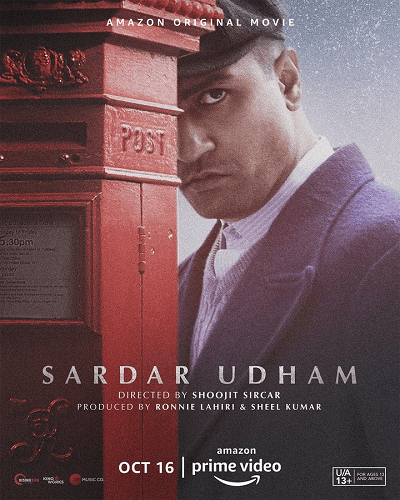
First, Sardar Udham isn't the talky movie you're looking for to stoke your revolutionary fire. Do not anticipate emotionally charged or hard-hitting dialoguebaazi. A smoldering observation of a man overcome by grief is shown in the pre-independence drama, which is based on actual occurrences. The protagonist uses stillness as his voice and numbing agony as his strength. Even 20 years later, avenging the horrific atrocity he saw in his 20s becomes the only reason for his existence due to the overwhelming sense of loss and misery he is experiencing. The movie cuts back and forth between the past and the present and is set during the start of World War II. The canvas is enormous, yet the main figure, Meagre, is covered in the substantial source material. No evidence of Udham's self-promotional writings or slogans (if any) was discovered. Here was a man with significant scarring calmly performing his job. The issue was to then piece together the available material and understand his mentality. Instead of just focusing on how he came to do what he did, Shoojit strives to unravel the "why." The objective is to comprehend the emotional journey of a young Amristar boy who would never wield a pistol, much less fire one. Why didn't he run away from the scene after firing at Dwyer from a close distance? Was it motivated by vengeance? Why not let go of the hurt completely after 20 years? Why can one individual be a terrorist and a revolutionary to different people? Shoojit (Piku, Vicky Donor) does not view freedom or heroism from a narrow perspective. His protagonist doesn't appear heroic or unbeatable. Udham didn't despise the person who inspired the slaughter of his nation. His struggle was against the British philosophy of suppressing others' freedoms of speech and association. Shoojit introduces us to Udham, a stubborn guy on a quest, during its arduous two hours and forty-minute running length. He is persistent in pursuing Dwyer and freedom from the oppressive British government, moving like a shadow. We are reduced to passive observers of his uphill journey for the longest period. Not enough of us feel invested. He is seen taking on odd jobs in London and becoming the focal point of several ordinary occurrences before the assassination. Even while we know that the volcano of his history will eventually erupt, the journey there is tedious. Underplaying can be useful as long as it doesn't fall flat. This movie is a ticking time bomb that will eventually erupt, but the wait will test your patience. The idea is to treat the narrative as calm before the storm. When Udham's inner agony finds a way to express itself, the effect is heightened by the silence and reaches a crescendo. Thoughtfully planned, the implementation has a mixed bag of effects. Even an hour into the film, the non-linear, verbose plot struggles to keep your interest. Watching the Jallianwala Bagh massacre being recreated is unpleasant, which is precisely why this narrative needs to be told. Vicky Kaushal explores unexplored territory as Sardar Udham. Although he makes an effort, a movie like this needs Irrfan to speak through his eyes. A skilled actor will enhance scenes that call for quiet. Vicky, however, is amazing in some scenes. His performance as a 20-something, drunken scene and pivotal interaction with a British investigator bring out the best in him as an actor. It breaks my heart to hear him ask, "Mere jawani ka koi matlab bana?" The text makes an effort to avoid clichés but instead comes off as current. Hinglish dialogues of Bhagat Singh, such as "Hum Sirf exploitation ke opposed hai. The phrase "Humein semi-independence nahi chahiye" seems inappropriate considering the situation. What were you doing when you were 23? It is a statement from Udham's reminiscing about his troubled past that sticks with you. The heroism of Sardar Udham never roared. It muttered. This freedom fighter traveled across continents, went by different names and kept a low profile all his life. He could not speak because his one-sided search for equality too consumed him. This movie is for you if you share my intense curiosity about his quiet existence. 7. Taare Zameen ParHow could anyone not adore a film made with the finest care about children, especially those with special needs? But is it the sole reason Tare Zameen Par appealed to me? Perhaps; perhaps not. I can confidently say that a compelling one-line story is narrated delightfully. When the human spirit triumphs, it is incredibly uplifting, but it is not the only thing that matters. 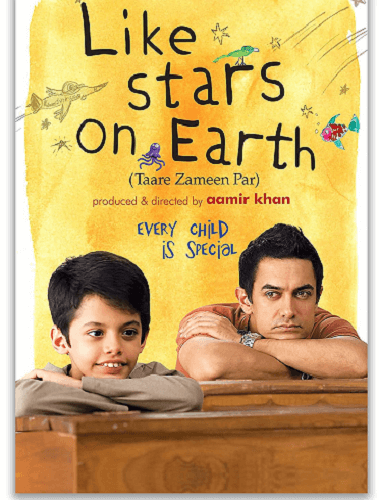
A child in Tare Zameer Par suffers because no one around him acknowledges that he is a slow learner. The narration's message applies to all kids, learning disabled or not, which is one of its most appealing features. How is it possible that academics should not value creativity? Additionally, it makes a very subtle reference to the fundamental ways we construct conformation in our systems. The tempo of the first half allows you to consider typical kids who are simply not academically inclined. In contrast to the earlier-depicted agony, the second half's resolution arrives too swiftly. However, if the goal is to demonstrate that challenges can be overcome, you may not necessarily want to highlight how challenging it is. I realized Darsheel Safary (Ishaan) hadn't spoken for about an hour after the intermission when he said a line about 45 minutes later. I had a knot in my throat that had been there for a long time, and I felt sad for Ishaan. I wanted to yell at someone to give him a big embrace. Darsheel's body language and facial emotions were the only basis for this. The director deserves praise for making this decision, and others like it with such dazzling confidence. Finally, we have a conversation writer who understands when to leave the actors alone. There are a few preachy, wordy sequences. But because they were beautifully worded, they did make their point. Because it was in stark contrast to the film's mood up to that point, Aamir Khan's entrance into the picture came across as forced and over-the-top. But after a time, you see that it's difficult to tell the difference between Aamir Khan, the actor/director, and his character Nikhumb. They are both working toward the same goal. Passionately. The other characters, including the conventional father, adoring mother, perceptive brother, cunning instructor, and mocking classmates, serve as caricatures. Each frame reflects its love for its subjects regardless of who or what the camera is focused on. Consequently, you start to adore what you see on the screen. Compositions, lighting, angles, and colors draw you in and frequently enchant you. The lingering camera may have increased the running time by about 10 to 15 minutes. However, it will be difficult to identify certain parts without which the film could have done. Everything is creating mood, character, or both. The songs also aid in telling the story. They are pure poetry, the lyrics. I know that's how they should be, but I can't recall the last time a song's words moved me to tears. I could not speak after hearing "mein kabhi batlaata nahi" (we all know how difficult that is!). I consider it creative when a kid's song accompanies rock-style guitar strumming. Were we ever kids? When did we lose sight of what it was like to be yelled at, belittled, and mocked along the way? And why did we pick the following generation to exact revenge? Will we be able to identify the child within us trying to escape? Will the feeling that caused the knot in my throat last after the credits have rolled? 8. SwadesSwades is a film directed by Ashutosh Gowariker (following Lagaan) and starring Shah Rukh Khan as Mohan Bhargava, a scientist working for NASA who returns to India after a long absence in search of his nanny, Kaveri Amma. It was inspired by the lives of Aravinda Pillalamarri and Ravi Kuchimanchi, an NRI couple who returned to India (Kishori Ballal). He plans to rent an RV and go see Kaveri Amma to bring her with him back to America after learning that she has moved to the small village of Charanpur. He runs into Gita (Gayatri Joshi), a childhood friend and the neighborhood teacher where Kaveri Amma now resides, as he arrives in Charanpur. He subsequently spends several days in the area, initially experiencing culture shock (he sleeps inside the RV because he cannot imagine sleeping outside) and his prejudice; he remarks, "Yahan kuch badalne wala nahi hai kyuki log badalna hi nahi chahte" (I can't imagine sleeping in the open). 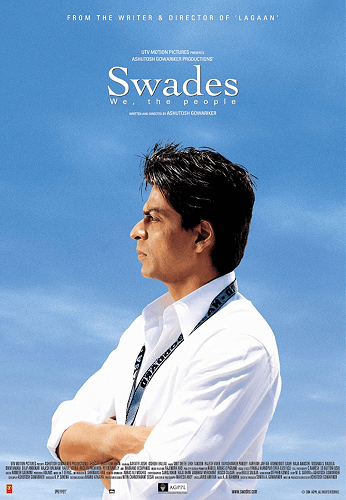
However, he gradually adjusts to the locals' peculiarities and way of life (which creates room for the gentle humor that the screenplay artfully employs). His change gradually starts after this. Gita's fierce independence and dedication to improving the lives of rural children also cause him to fall in love with her. The turning point occurs when Kaveri Amma requests Mohan to collect the money from an impoverished villager who owes Gita money and lives in another village across the river. He arrives there with Daya Shankar Pandey and Rajesh Vivek, but when he sees the man's poor condition and refusal to accept any money, he decides to leave. The amazing sight that follows occurs when they arrive at a tiny station on the way back, where a young boy sells glasses of water for 25 pence apiece. Mohan agrees to the child's request that he buy him a glass. The film is unique since it does not convey the information in a tried-and-true manner. The film's title serves as a metaphor for its politics, concerned with how humans have divided themselves and how only humans can do so. The movie makes a wise point that you can be a patriot even if you do not serve in the military. The scenario that comes before and the song Ye Tara Woh Tara are outstanding examples of this. The people assemble to watch a movie projected onto a white sheet using a projector. However, because of caste divisions, members of the oppressed caste congregate on the side opposite the projector (thereby effectively watching a reverse image). The movie night is shortened due to load shedding, though. By singing Ye Tara Who Tara, Mohan takes advantage of the occasion to involve the children and the locals. With lines from Javed Akhtar like "ek na hum hopaye toh," "anyay se ladne ko hogi koi janta hi nahi," and "phir na kehna nirbalhai kyun haara," the movie, through Mohan, symbolically questions the idea of caste divide and its impracticality while also emphasizing the need for people to cultivate a scientific The song moves the plot along entertainingly and effectively. These miniature treasures are spread across the Swades album and accompanied by A.R. Rahman's incredibly reflective and upbeat music (my favorite being Yunhi Chala). Perfect casting was used. The other characters steal the show, aside from Shah Rukh Khan, who is great as Mohan. In addition to Kishori Ballal's portrayal of Kaveri Amma, who reminded me of my grandmother in terms of mannerisms, Gayatri Joshi is wonderful as Gita (she provides the feistiness and contrasts Shah Rukh's subtle Mohan very well). Both Daya Shankar Pandey and Rajesh Vivek are excellent in their roles as Melaram, the local cook who wants to move to America and speaks broken English, making excellent partners for Mohan. Swades is one of the few movies in its category that doesn't have any of the recent patriotic movies' jingoistic or hyper-nationalistic undertones. Mera Bharat Mahaan doesn't have any bloodlust, war cries, fear-mongering, or chest-thumping; in fact, Mohan states in a telling sequence, "main nahi maanta humara desh sabse mahan hai." Swades is deeply entrenched, empathically examines our culture from within, and attempts to address the complexity of issues that emerge at the grassroots. It is a masterpiece of skillful storytelling that evokes longing and feelings of patriotism in the audience for their motherland, all within the context of the elusiveness of what we proudly refer to as "home." 9. ShershahCaptain Vikram Batra (PVC), whose unwavering spirit and unmatched heroism significantly aided India's triumph, is profiled in the book "Shershaah," which details the events leading up to the Kargil war. 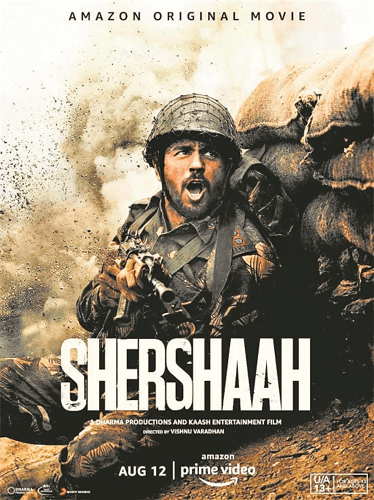
The hardest mountain warfare in history was the Kargil battle. This epic war, fought at a dizzying height of 17,000 feet, had a lot on the line. The Pakistani soldiers had crossed the Line of Control (LoC) into Indian territory while posing as militants from Kashmir. The skirmishes swiftly turned into a full-fledged war, which also saw the promotion of a soldier from Lieutenant to Captain for his unwavering patriotism and willingness to fly the tricolor during the height of hostilities, even if it meant giving his life to further the cause. Before we get there, though, writer Sandeep Srivastava and director Vishnu Varadhan take their time. So, Captain Vikram Batra (Sidharth Malhotra) takes us back to his early years before being introduced to Dimple Cheema (Kiara Advani), the love of his life, and before being assigned as a Lieutenant to the 13 JAK Rifles. Although this build-up shows the character's journey, it doesn't do so compellingly enough to justify all the screen time. In reality, Kiara Advani's song and the love songs that feature her feel like a diversion from the serious topic. This affects the movie's pacing, which suffers from a sluggish first half. But Sandeep Srivastava, the author, and Vishnu Varadhan, the director, get there. As a result, Captain Vikram Batra (Sidharth Malhotra) takes us back to his childhood before meeting Dimple Cheema (Kiara Advani), his true love, and before being appointed as a Lieutenant to the 13 JAK Rifles. While this build-up depicts the character's journey, it isn't captivating enough to make the entire screen time worthwhile. Kiara Advani's songs and the love songs that feature her tend to feel like a distraction from the important subject. This impacts the film's tempo, which is sluggish in the first half. Of course, it was a huge challenge for filmmaker Vishnu Varadhan to do justice to the vast amount of information and milestones from the Kargil war, but most of it is covered in the second half. In the combat scenes, Sidharth Malhotra excels, and his acting develops throughout the movie. This is one of his stronger performances because his sincere attempts to capture the aura of his character's larger-than-life persona are seen on screen. As a staunch Sardarni who adores her lover with all of her heart, Kiara Advani portrays herself convincingly. She doesn't have much room to maneuver, though. Captain Sanjeev Jamwal, stern on the exterior but emotional on the inside, is played well by Shiv Panditt. Sharaf Figar and Nikitin Dheer make an impression as the upbeat Major Ajay Singh Jasrotia and the straightforward Col. Yogesh Kumar Joshi, respectively. These men work well as a team, and you will always support them. There are a few stereotypes and cliches among the numerous other character actors, particularly on the Pakistani side. The general tone of the movie is undoubtedly patriotic. Numerous fight sequences fail to capture the expansive scope of the movie's setting and may be better viewed on a large screen. However, Bollywood hasn't produced many critically and financially successful epic war movies. According to those criteria, "Shershaah" places higher than most contemporary war plays and provides a motivational tale that must be recounted. Once the men in uniform decide to push the enemy out and retake our land, the film's powerful source material is guaranteed to grip you. 10. A WednesdayThe wife of a man with curly hair, a slight hunch, and a vegetable shopping bag nags him, "Don't forget the tomatoes." The man cries, detonates a bomb in a police station, and then coolly makes his way to an unoccupied terrace of a new building to begin his plan of mass destruction. 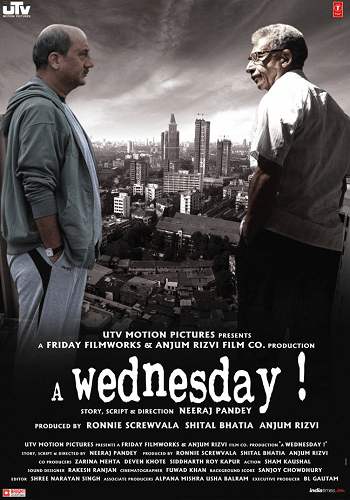
That's the plot of A Wednesday, the debut film from Neeraj Pandey, which might easily be the tale of any day in any city. Despite several passages that could be construed as Muslim bashing, it has a walloping impact and is infallibly A-grade. It is the kind of medium-budget venture we should see far more frequently at the theaters since it has speed, excitement, and technical glitz (forget about those amateurish split screens). It is a relief to leave the pan-caked poppets and fake Rambo Bambos behind! In essence, two elderly guys compete with wit and cunning. Additionally, their performances are amazing. Naseeruddin Shah portrays the cunning tomato buyer who threatens the city with repeated explosions with natural ease. Additionally, Anupam Kher, who plays the struggling police commissioner, is excellent, hiding his worry under suave stealth. A few months back, Shah had a great cameo in Khuda Kay Liye. He shows that he is the most valued actor working today without much fuss or worry. Kher makes a wonderful counterpoint, with his body language, chatty eyes, and pitchy voice defining a top-notch performance. In addition to Jimmy Sheirgill, who is focused and convincing as a rough-tactics cop, Deepal Shaw, whose Hindi dialogue delivery is unmatched in the role of a TV news reporter, an attention-grabbing performance by Aamir Bashir as a ramrod-straight cop, and an impressively skilled cameo by Kali Prasad Mukherjee in the role of a taunting terrorist, Pandey also gets strong performances from these actors. The storyline might have come straight from Die Hard with a Vengeance or any other cat-and-mouse Hollywood thriller. Pandey succeeds in connecting it to the present while avoiding speed bumps and maintaining your interest as the scenes cut from the deserted terrace to the police station and then to the congested streets. The entire 100 minutes feature excellent photography by Fuwad Khan, yet the conclusion of the effort is quite dubious. Whether you like it or not, this article contains overt Muslim bashing in addition to the persistent concern about linking Islam with terrorism ("They are bugs"). Are they discussing pest management? It suffices to note that it has been utilized earlier in Kamal Haasan's Hindustani without giving away the ending. Additionally, several things are incomprehensible, such as the fact that only one TV crew was present at the hotspots, the police commissioner sped out on a lone automobile trip, and the climax kick-off, which is more fantastical than realistic. The conclusion is, in fact, the kind that could only occur in a movie. And that doesn't work is a real effort. Well, who's perfect, then? A Wednesday needs to be observed, understood, and discussed. Try it out.
Next TopicTop 10 Hollywood Actresses' Name
|
 For Videos Join Our Youtube Channel: Join Now
For Videos Join Our Youtube Channel: Join Now
Feedback
- Send your Feedback to [email protected]
Help Others, Please Share









